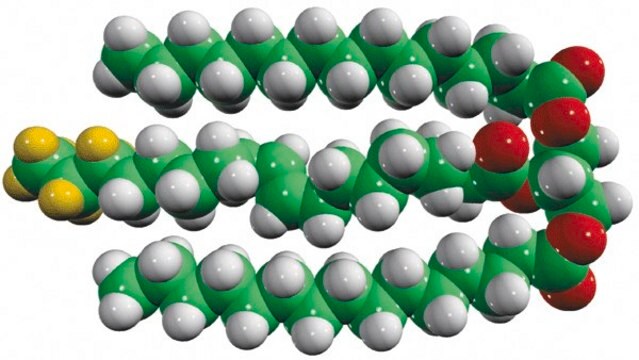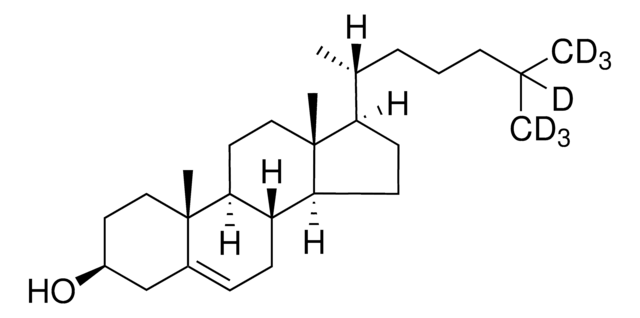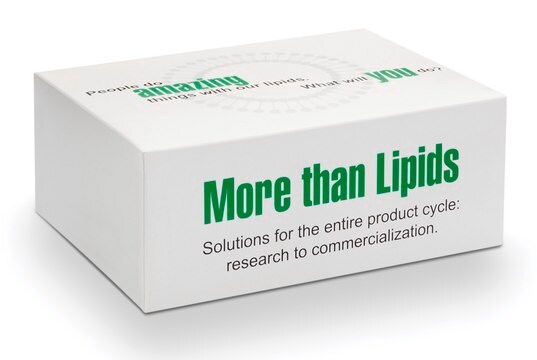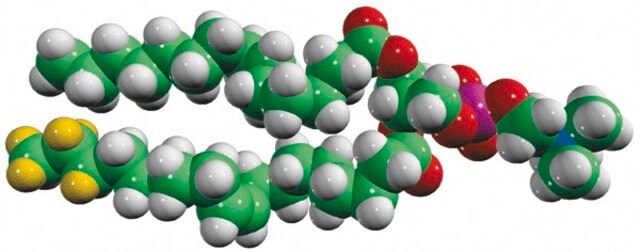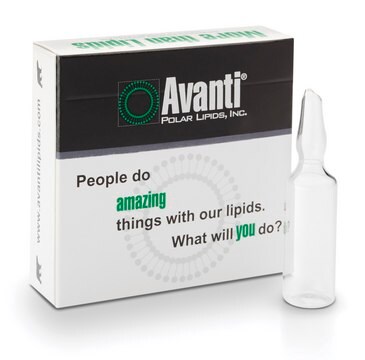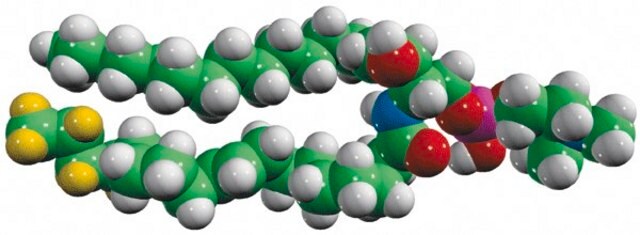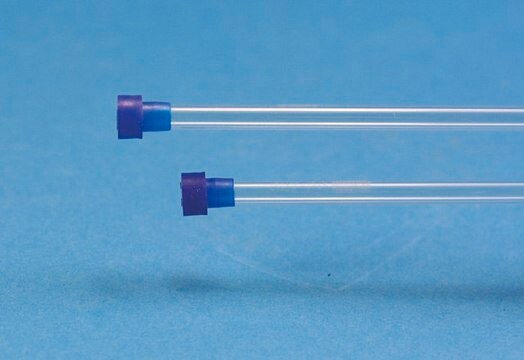791647C
Avanti
15:0-18:1-d7 DG
Avanti Research™ - A Croda Brand 791647C
Sinónimos:
1-pentadecanoyl-2-oleyol(d7)-sn-glycerol
About This Item
Productos recomendados
assay
>99% (TLC)
form
liquid
packaging
pkg of 1 × 1 mL (791647C-1mg)
manufacturer/tradename
Avanti Research™ - A Croda Brand 791647C
concentration
1 mg/mL (791647C-1mg)
shipped in
dry ice
storage temp.
−20°C
General description
Application
- as an internal standard to spike skeletal muscle samples for liquid chromatography-mass spectroscopy (LC-MS) analysis
- as a lipid standard in mass spectroscopy for the identification of lipids in mitochondria and lipid droplets
- in the egg yolk lipid extraction as an internal standard for mass spectroscopy analysis
Biochem/physiol Actions
Packaging
Legal Information
also commonly purchased with this product
signalword
Danger
Hazard Classifications
Acute Tox. 3 Inhalation - Acute Tox. 4 Oral - Aquatic Chronic 3 - Carc. 2 - Eye Irrit. 2 - Repr. 2 - Skin Irrit. 2 - STOT RE 1 - STOT SE 3
target_organs
Central nervous system, Liver,Kidney
Storage Class
6.1D - Non-combustible acute toxic Cat.3 / toxic hazardous materials or hazardous materials causing chronic effects
wgk_germany
WGK 3
flash_point_f
does not flash
flash_point_c
does not flash
Elija entre una de las versiones más recientes:
Certificados de análisis (COA)
Lo sentimos, en este momento no disponemos de COAs para este producto en línea.
Si necesita más asistencia, póngase en contacto con Atención al cliente
¿Ya tiene este producto?
Encuentre la documentación para los productos que ha comprado recientemente en la Biblioteca de documentos.
Los clientes también vieron
Nuestro equipo de científicos tiene experiencia en todas las áreas de investigación: Ciencias de la vida, Ciencia de los materiales, Síntesis química, Cromatografía, Analítica y muchas otras.
Póngase en contacto con el Servicio técnico